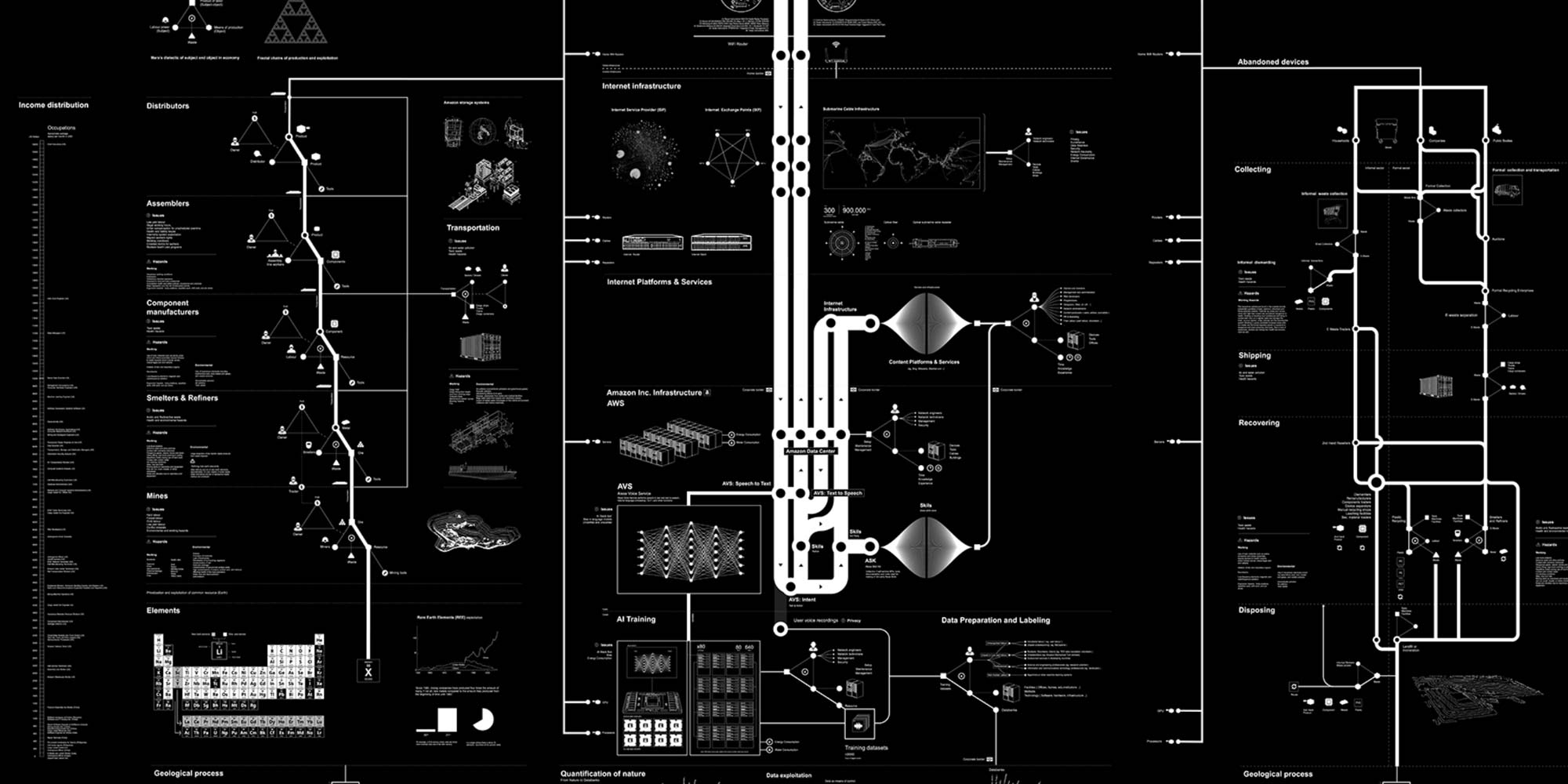It’s the last day before Christmas at the HTL Neufelden, but despite the holiday mood you still have the feeling that people here are working hard: The whole school is involved in the project “Zero Waste”, which means that there is hardly any rubbish to be seen, nothing is lying around and waste is avoided as much as possible. With a self-operated punch stand the pupils also collect donations for a social project. And the Gym at the Secondary Technical School is also bustling with activity: Last chairs are set up, mats are laid out and the sound equipment is tested so that everything is ready when Katharina Hof, cultural mediator at the Ars Electronica Center, enters the stage.
Half an hour later, the bustling activity stops abruptly and silence reigns in the large room normally used for exercise and sports. Now it’s filled to capacity, with students sitting on mats on the floor and on benches at the sides. They listen with excitement to the lecture “Anatomy of an AI System”, which Katharina Hof has prepared for them.

Anatomy of an AI System is a large-scale map and detailed essay that examines the human labor, data and planetary resources required to build and operate an Amazon Echo. The oversized drawing combines and visualizes three central, extracted processes required to operate a large-scale artificial intelligence system: material resources, human labor, and data. The map and essay consider these three elements over time, as a visual description of the birth, life and death of a single Amazon Echo unit.
Katharina Hof describes this complex project by Kate Crawford and Vladan Joler, which has been on display at the Ars Electronica Center since May 2019, very vividly and additionally embellishes it with examples and facts, such as the Moral Machine from the MIT Media Lab – What would a self-driving car do? If the Internet were a country, we learn that it would be among the leading countries in terms of energy consumption and that an AI is only as fair as the data we feed it with. With this quote from Joseph Beuys and enriched with some facts and suggestions, the students and teachers finally go on Christmas vacation:
“We have to invent the future that we went, otherwise we get one that we don’t want.”
Joseph Beuys
School principal Walter Jungwirth told us in a short interview how it happened that the Ars Electronica cultural mediator gave this exciting lecture at the HTL Neufelden.
How did you hear about Mrs Hof’s lecture?
Walter Jungwirth: At the Congress of the HTL Directors of Austria in Baden in November 2019, Mrs Hof made an interesting contribution to this topic in the form of a lecture. I asked her if there was a possibility to give the lecture at our school, because I think that all students should hear the content.
Why do you think it is important for your students to hear the lecture?
Walter Jungwirth: At our school we are very intensively engaged in digitalization in the sense of connecting different technical departments and topics. In addition, a new computer science center for digitalization was created at the HTL. I think it is important to deal with capital, work, nature and resources, with actual costs and the resulting social and economic responsibility.
The lecture could be an interesting impulse for an introduction to the subject – for example in the subjects of the natural sciences. Using a topic that really interests our young people, such as the Amazon Alexa or similar intelligent assistants, they could deal with technology and ecology.

Artificial Intelligence and education at your HTL – what is the overlap?
Walter Jungwirth: In terms of content, the new syllabus Betriebsinformatik 2020 takes full account of the digitalization aspect: Computer science and technology are perfectly combined. Through individually selectable in-depth modules, the curriculum offers current IT topics such as “Artificial Intelligence”, “Big Data”, “Internet of Things”, “Virtual and Augmented Reality” or from the technology area topics such as “Robotics”, “Integrated Engineering” or “Production Logistics”, as well as robotics or machine learning.
To what extent will so-called “artificial intelligence” influence the (job) education of the future?
Walter Jungwirth: The close cooperation with our partner companies clearly shows that computer science will be important, but above all that the linking of individual fields of knowledge will become enormously more important. For us, the basic requirement is a solid education not only in technical areas, but above all in mathematical fundamentals.
Our students are already working on challenging tasks within the framework of diploma theses and programs for particularly gifted students. Some of these tasks are suggested to us externally, but more and more often they come from the everyday world of young people and thus make them curious. It is essential for us that the project groups “dare” to develop ideas and to implement them consistently. Theory is one thing, implementation in practice is what distinguishes our working method.
AI will be a necessary tool on the way to the solution of existing or emerging problems. Without technical professional training, future solutions will be difficult to realize – technology must and will be an essential part of the solution.
And do the students already have thoughts about ethics, about the morality of artificial intelligence or is that still too far away from them?
Walter Jungwirth: In my opinion, considerations in this direction are still far too little considered and integrated. For an innovative design of the future, these topics must be taken into account.
The Anatomy of an AI System project can be seen permanently in the Understanding AI exhibition at the Ars Electronica Center. It was also part of the Ars Electronica Festival 2019 and received an award at the STARTS Prize 2019.
To learn more about Ars Electronica, follow us on Facebook, Twitter, Instagram et al., subscribe to our newsletter, and check us out online at https://ars.electronica.art/news/en/.
